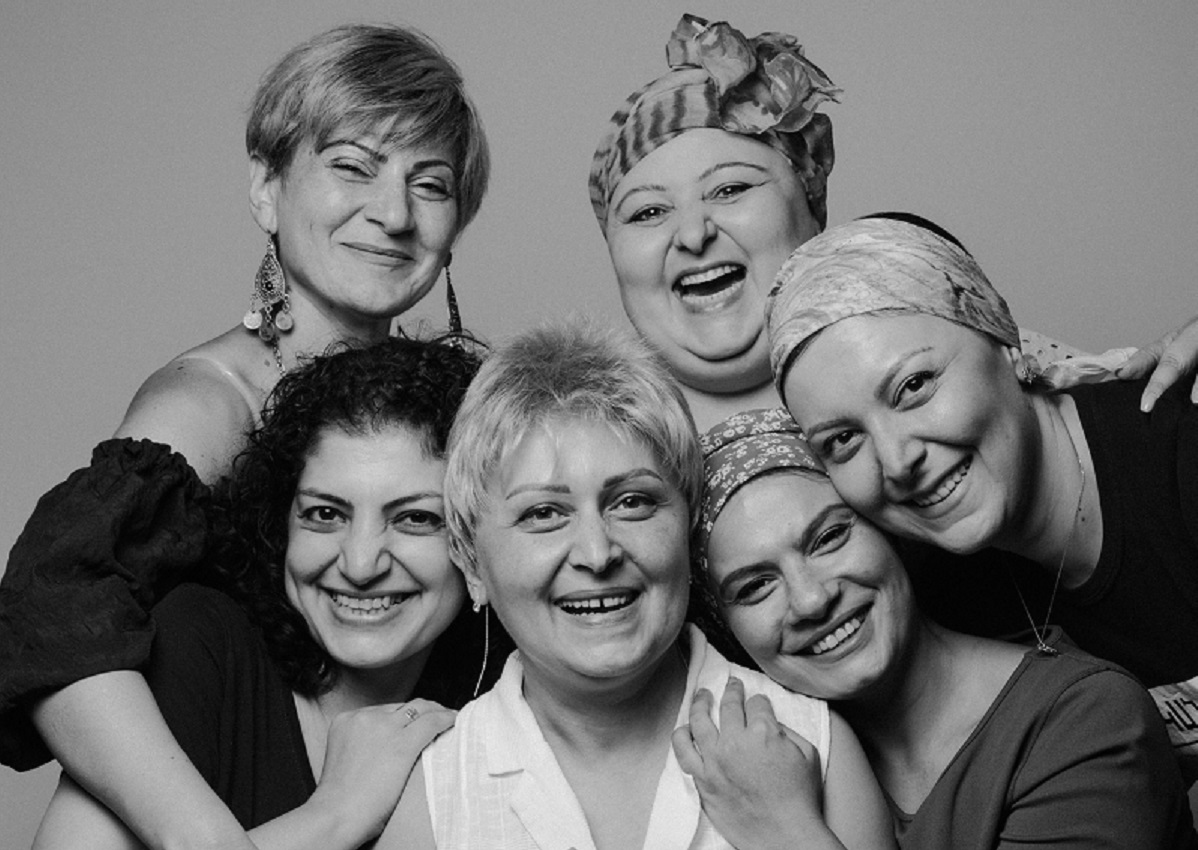
Obstetric violence in Armenia
According to the World Health Organization, obstetric violence includes any actions by medical personnel that “harm a pregnant woman or a woman in labor, manifesting as neglect, physical violence, disrespectful treatment, and other forms.”
A JAMnews correspondent sought to analyze the situation in Armenia and identify the forms of obstetric violence observed in the country.
- Armenian diaspora doctors propose changes to healthcare system in Armenia
- Being HIV positive in Armenia: living against stigma
- Armenian families of soldiers killed in Karabakh war offered fertility treatment
“Wasn’t That Physical Violence?”
“Four years ago, during the birth of my first child, the doctor pressed on my stomach so hard that I still felt pain months after delivery. Before the birth of my second child, I approached the hospital with caution and immediately asked the doctor to spare me from such physical pressure,” recalls 35-year-old Anna S.
To her surprise, the gynecologist assured her that nothing like that would happen—modern medical practices no longer allow it.
The delivery went smoothly and without physical intervention. Yet Anna still wonders why her first delivery couldn’t have been handled the same way:
“Years ago, I couldn’t have imagined that a doctor pressing on my stomach with their full body weight could be considered obstetric violence. No one talked about it then. Now that this topic is being discussed on social media, I ask myself: wasn’t that physical violence?”
International organisations’ approach
In 2015, the World Health Organization, responding to numerous alarming reports, issued a statement condemning all forms of obstetric violence.
The organization declared unacceptable any cases of “physical violence, humiliation, verbal aggression, forced or non-consensual medical procedures, severe breaches of confidentiality, neglect, or ignoring women.”
A 2019 UN General Assembly report also condemned this phenomenon:
“The harrowing stories shared by women reveal that mistreatment and violence in reproductive health and childbirth occur worldwide, affecting women across all socio-economic levels.”
According to the report, manifestations of obstetric violence primarily fall into the categories of physical, psychological, and financial pressure.
“Young and less educated women are most vulnerable”
Statistics on obstetric violence are not collected in all countries. However, studies conducted in various nations over the years have provided some insight. For instance, in 2018, the World Health Organization published the results of a survey conducted among women who gave birth in Ghana, Guinea, Myanmar, and Nigeria.
The findings revealed that out of 2,016 women:
- 762 (37.8%) experienced verbal abuse, including insults, shouting, or ridicule;
- 282 (14%) were subjected to physical violence;
- 11 (0.6%) reported stigma or discrimination based on race or ethnicity;
- 261 (12.9%) underwent surgery, giving birth via cesarean section, with 35 of them (13.4%) stating they had not consented to the procedure.
Additionally, the research group noted that younger and less educated women in these countries were the most vulnerable to obstetric violence.
No definition of “obstetric violence” in Armenia
“There is no definition of ‘obstetric violence’ in the legislation of the Republic of Armenia. Official statistics on this issue are not available,” the Ministry of Health responded to our inquiry.
Additionally, they stated that “no complaints have been received regarding obstetric violence and/or inappropriate treatment by specialists during the prenatal and postnatal periods.”
As no complaints have been submitted, the ministry “does not plan to maintain such statistics.”
“Armenia faces numerous cases of obstetric violence”
In Armenia, as in many parts of the world, numerous cases of obstetric violence occur, claims Astghik Vardanyan, a medical anthropologist and founder of the Michel Odent Maternity Center. Women share their experiences of this issue both during consultations with the center’s specialists and on social media.
The goal of the Maternity Center is to provide comprehensive and qualified support to women throughout pregnancy and the postpartum period. The center is also developing modules on preventing obstetric violence as part of an educational program for medical professionals.
“Recently, we posted the story of a woman who experienced obstetric violence on our Facebook page, and many women responded. They shared their own experiences,” says Astghik Vardanyan.
She attributes the lack of complaints to the Ministry of Health to the following reasons:
- insufficient public awareness about this phenomenon;
- a lack of belief in the possibility of change;
- reluctance to report medical workers, who are often acquaintances or relatives.
“If a dedicated hotline for reporting obstetric violence is set up and widely publicized, it could raise awareness. Many women might then feel empowered to report the violence they have experienced,” the expert suggests.
Medical staff receive no guidelines on preventing obstetric violence
When asked about the recommendations provided to specialists to prevent various forms of obstetric violence, the Ministry of Health responded: “There is no such guidance.”
This means that obstetric violence is not regulated in Armenia—neither through legislation nor professional recommendations or other regulations.
Meanwhile, Astghik Vardanyan believes that legal regulations and guidelines on obstetric violence are essential:
“This would provide greater legal protection not only for women but also for medical workers.”
She emphasizes that legal regulations on such a sensitive issue are particularly crucial for Armenia:
“Armenia is already facing a challenging demographic situation, which requires stable population growth. However, we have the lowest birth rate in the region. This figure has dropped from 4.9 to 1.6.”
The total fertility rate indicates the average number of children a woman would give birth to during her reproductive years (15-50 years), assuming the birth rate for each age group remains constant. To maintain a stable population, a total fertility rate of around 2.1 children per woman is needed.
According to Vardanyan, the number of cesarean sections in Armenia is also steadily rising:
“In 2023, 39.5% of pregnant women underwent cesarean sections. In some medical centers in Yerevan, this figure exceeds 50%.”
While cesarean sections can be life-saving in certain situations, they can also lead to undesirable outcomes, Vardanyan notes:
“This can increase maternal mortality rates, lead to risks of hemorrhaging, difficulties with breastfeeding, stillbirths in subsequent pregnancies, and infertility.”
The World Health Organization considers the optimal rate of cesarean sections to be between 10-15% of all births.
Most common forms of obstetric violence in Armenia
Despite the lack of official statistics, Astghik Vardanyan, based on data from the Maternity Center, identifies cesarean sections without specific medical indications as the most common form of obstetric violence. This is followed by various forms of mistreatment during breastfeeding:
“In maternity hospitals, women are not always helped to start breastfeeding. On the contrary, they are often intimidated: ‘You don’t have milk; go and buy formula from this brand.’ There are also cases of unjustified labor induction, episiotomies [perineal incisions during childbirth], the use of the Kristeller maneuver [pushing on the abdomen to stimulate labor], and other interventions.”
“8-10% of cesarean sections are performed without medical indications” – Ministry of Health study
Armenia’s Ministry of Health has identified that a significant portion of cesarean sections in Armenia are performed without medical indications. According to the study “Reasons for the Increase in Cesarean Sections in Armenia,” conducted by the ministry with support from the UN Population Fund:
- 81.4% of indications for cesarean sections are obstetric-gynecological, 46.8% are related to the fetus and its health, and 24.2% are due to non-obstetric factors.
- Due to the lack of a unified approach to indications, doctors avoid risky decisions, aware of their vulnerability in case of negative outcomes, and prefer to perform cesarean sections.
- 4.4% of doctors are willing to perform cesarean sections upon the patient’s request.
The study also included a survey of women, who identified the following reasons for cesarean sections:
- Maternal condition/gynecological issues (43.2%)
- Indications related to the fetus (30.1%)
- Recommendations from other specialists (19.9%)
- Request from the pregnant woman or relatives (6.8%).
Given the likelihood of high statistical error, the Ministry of Health concluded that 8-10% of cesarean sections are performed without medical indications.
In response to the ongoing increase in cesarean sections and the findings of its research, the ministry has approved the “Program for Halting and Reducing the Growth of Cesarean Sections, 2024-2028.”
UN appeal
In 2019, the United Nations issued an appeal to countries worldwide:
“States are obligated to respect, protect, and fulfill women’s rights, including the right to reproductive health services and the highest attainable standard of physical and mental health during childbirth. They must protect women from mistreatment and gender-based violence and adopt appropriate laws to prevent obstetric violence.”
Some countries already have legal frameworks addressing obstetric violence. Venezuela is one of the leaders in the movement against obstetric violence, having included provisions on this issue in its “Law on Violence Against Women,”adopted in 2007.
In Armenia, women will have to wait to see whether a legislative framework to prevent and penalize obstetric violence will be adopted. Since the issue is not yet under discussion, experts do not anticipate quick solutions.
Obstetric violence in Armenia








